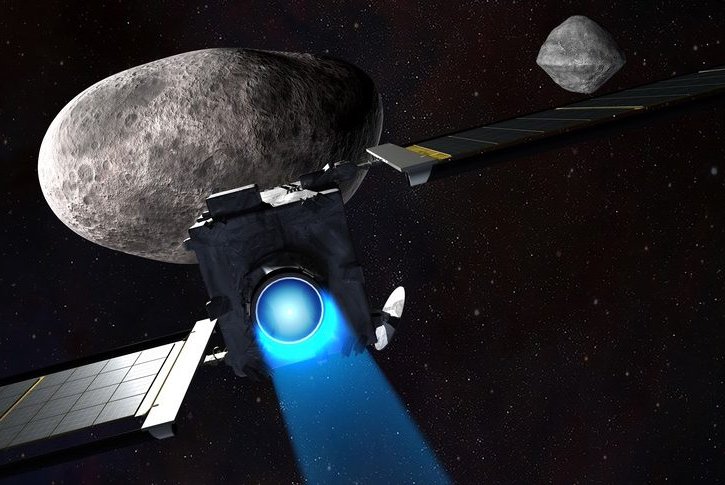By Paul Brinkmann

An illustration depicts NASA's DART spacecraft moments before crashing into the Dimorphos asteroid. Image courtesy of NASA
Nov. 21 (UPI) -- NASA's plan to whack an asteroid with a spacecraft to be launched late Tuesday from California is intended to provide insight into how humanity might prevent a collision with a planet-killing space rock, space agency officials said.
For the first time, a spacecraft will attempt next fall to smash into an asteroid as an experiment to show how such a space body could be deflected if it were headed toward Earth, Lori Glaze, NASA's director of planetary science, said Sunday in a press conference.
"I feel that once we've completed this test, we are going to learn an incredible amount and be so much more prepared in the future if, indeed, a potential asteroid could pose a threat," Glaze said.
But NASA doesn't know if it will learn everything it needs to know to defend Earth against such a deadly strike, officials said.

An image depicts the DART spacecraft nearing collision with the asteroid Dimorphos with the LICIACube small satellite, at left, observing. Image courtesy of Steve Gribben/Johns Hopkins University
RELATED NASA chief calls for global effort to study asteroid threat
SpaceX plans to launch NASA's DART mission, which stands for Double Asteroid Redirection Test, at 10:20 p.m. PST Tuesday from Vandenberg Space Force Base.
The Falcon 9 rocket will lift off at that time or wait for another launch window over a period of 84 days.
Many facts still are unknown about the outcome of the test, because NASA has little knowledge of the composition of the target asteroid -- Dimorphos, which is the size of a football stadium -- said Tom Statler, NASA's DART program scientist.

An illustration depicts the DART spacecraft nearing a planned collision with the asteroid Dimophos. Image courtesy of NASA
"The issue of how prepared do we actually want to be -- that's a much broader discussion to be had across governments and the nations," Statler said. "In addition to being able to deflect an asteroid, we still need to study the sky and look for them."
The $330 million mission will fly to the Didymos asteroid system, which actually are twin bodies that circle each other.
The target asteroid, Dimorphos, is a satellite of Didymos. The DART spacecraft will fly into Dimorphos at 15,000 mph, after which Earth-based telescopes will monitor if and how the impact changes its path
.
"It's so important that we track and monitor these small objects, as well as develop new techniques that can help us in the future to ensure that one of them and our planet Earth don't find themselves in the same place at the same time," Glaze said.
"This is a key test that NASA and other agencies want to perform before we have an actual need," she
NASA chose the Didymos system of two asteroids because it offers a unique chance to obtain precise measurements from a small impact.
The DART spacecraft itself will be completely destroyed and throw out a cloud of debris, according to NASA, which also will help the agency measure the impact.
No comments:
Post a Comment